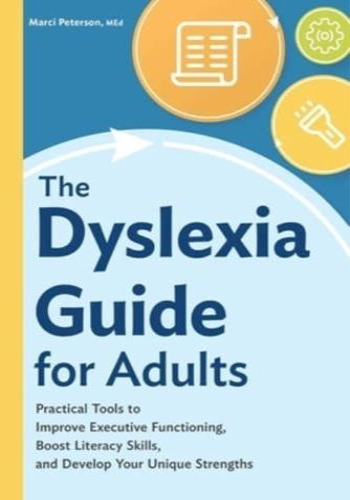Chapter 1: Understanding Dyslexia in Adulthood
This chapter introduces dyslexia, a neurodevelopmental disorder that affects reading, writing, and spelling. It highlights that dyslexia can persist into adulthood and that adults with dyslexia may face unique challenges and experiences.
Chapter 2: Identifying the Signs and Symptoms of Dyslexia in Adults
This chapter discusses the different signs and symptoms of dyslexia in adults, including difficulty with reading fluency, comprehension, and spelling. It provides specific examples, such as frequent misspellings, slow reading speed, and difficulty understanding written instructions.
Example: An adult may struggle to read a newspaper article fluently and accurately, even though they have a high level of vocabulary and general knowledge.
Chapter 3: The Impact of Dyslexia on Everyday Life
This chapter explores the impact of dyslexia on various aspects of daily life, including work, relationships, and self-esteem. It discusses the challenges adults with dyslexia may face in these areas and provides strategies for coping.
Example: An adult with dyslexia may struggle to read and understand legal documents, which can hinder their ability to make informed decisions.
Chapter 4: Getting a Diagnosis and Support
This chapter emphasizes the importance of getting a formal diagnosis of dyslexia to access appropriate support and accommodations. It outlines the different types of assessments available and discusses the benefits of seeking professional help.
Example: An adult who suspects they may have dyslexia can schedule an evaluation with a psychoeducational or educational diagnostician.
Chapter 5: Accommodations and Strategies for Adults with Dyslexia
This chapter provides practical advice on accommodations, strategies, and assistive technologies that can support adults with dyslexia. It covers topics such as assistive reading software, audiobooks, and time extensions.
Example: An adult with dyslexia may use a text-to-speech software to read documents aloud, improving their comprehension.
Chapter 6: Strengths and Challenges in the Workplace
This chapter focuses on dyslexia in the workplace, discussing the challenges and strengths that adults with dyslexia may encounter. It offers strategies for workplace success, such as advocating for accommodations and building relationships with supportive colleagues.
Example: An adult with dyslexia may work in a team with a strong writing component. They can use their strengths in problem-solving and creativity to contribute to the group.
Chapter 7: Dyslexia and Relationships
This chapter explores the impact of dyslexia on relationships, including communication, social interactions, and self-disclosure. It provides advice on how to navigate these challenges and build meaningful connections.
Example: An adult with dyslexia may experience anxiety when discussing their reading difficulties with a partner. They can practice self-advocacy skills to communicate their needs clearly.
Chapter 8: Self-Acceptance and Empowerment
This chapter emphasizes the importance of self-acceptance and empowerment for adults with dyslexia. It discusses strategies for overcoming negative self-perceptions and developing a positive self-identity.
Example: An adult with dyslexia can join a support group or connect with others who have similar experiences, fostering a sense of community and belonging.
Chapter 9: Looking Forward: The Future of Dyslexia
This chapter provides an optimistic outlook on the future of dyslexia, highlighting advances in research and technology. It discusses the increasing awareness and understanding of dyslexia and the growing support available for adults with the condition.







